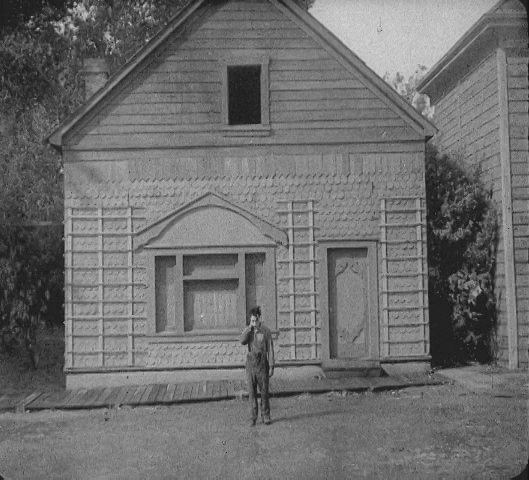
In the days of silent comedy, jokes by necessity consisted of physical routines. Charlie Chaplin’s mournful expressions, slumped shoulders, and funny walks immediately come to mind, as well as his slapstick bits and pratfalls. Just as memorable are the daredevil, death-defying stunts of Harold Lloyd and Buster Keaton, who competed with each other throughout their careers. The stonefaced Keaton “suffered most when the talkies arrived,” notes Jana Prikryl in The New York Review of Books, and “never commanded the wealth or popularity” of Chaplin or Lloyd in his day.
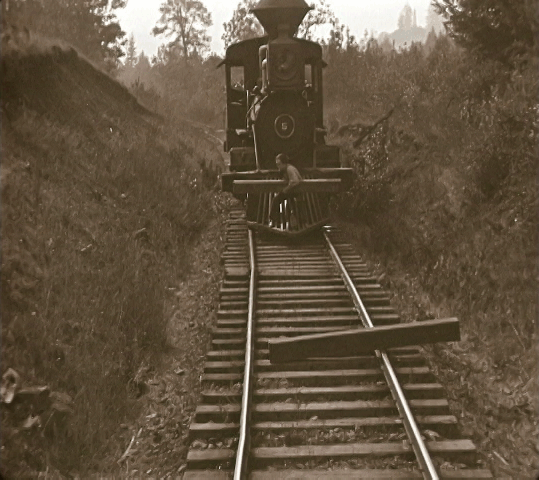
Nonetheless, as Tony Zhou demonstrated recently in his video essay series Every Frame a Painting, Keaton has since become one of those filmmakers who are “so influential that no matter where you look, you see traces of them everywhere.” His framing crops up in Wes Anderson’s careful set-pieces; his “acrobatics and stunts” in Jackie Chan’s action sequences; and his deadpan demeanor in Bill Murray’s endearing sad-sack performances. Keaton was, said Orson Welles, “the greatest of all the clowns in the history of the cinema.” In the silent era, that also meant he was the greatest of all the stuntmen.
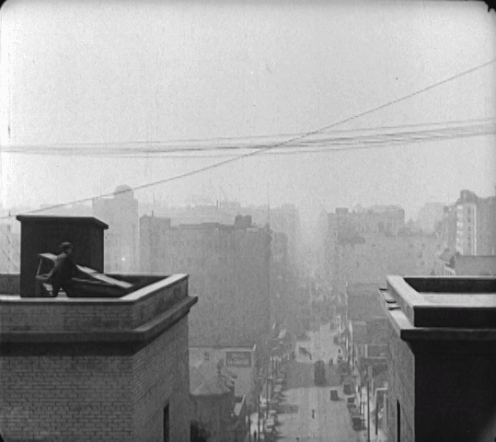
“No silent star did more dangerous stunts than Buster Keaton,” Roger Ebert wrote with deep admiration. Even Harold Lloyd’s vertigo-inducing clock scenes in 1923’s Safety Last used trick sets to lessen the risks. Keaton not only took on the full risk himself in his most famous stunt scenes—many of which you can see in gif form here—he also “doubled for some of his actors, doing their stunts as well as his own.” In Steamboat Bill, Jr. (1928, top), Keaton stands in the exact spot of an upper window of the façade of a house that comes down around him. In his 1926 classic The General, further down, he performs a jaw-dropping feat—using one railroad tie to push aside another while riding on the cow catcher of a moving locomotive.
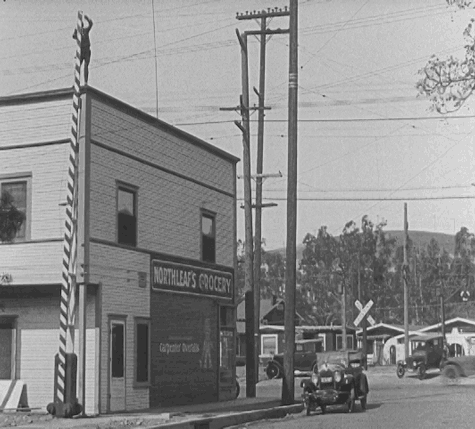
Further up, in 1923’s Three Ages—the first film Keaton wrote, directed, and starred in—he performs an authentically terrifying stunt that gives acrophobic viewers instant chills. Just above, from the following year’s Sherlock Jr., we see a similarly heart-racing feat as Keaton clutches a roadblock gate and falls two stories into a speeding car. And in 1928’s The Cameraman, below, he goes down with a tall collapsing platform. Keaton’s visual comedy was superb; “he’s airily nimble,” Charlie Fox writes in a Cabinet essay on the silent star’s fall into alcoholism after the talkies left his career stranded; “Nobody else’s body yielded so smoothly to the sublime mindlessness that the best physical comedy requires.”
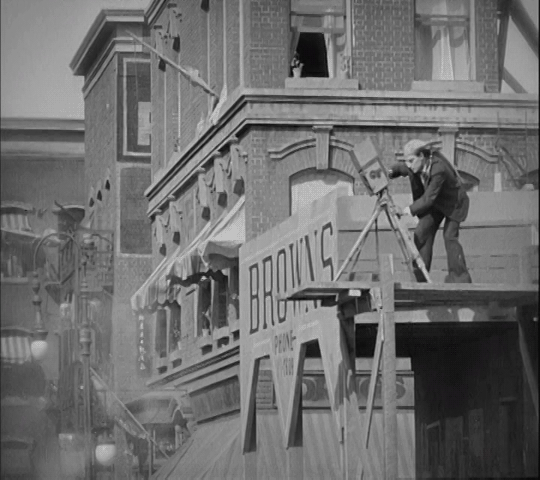
In just these few key scenes, we see how Keaton’s stunts stripped away what Prikryl calls the “sappy, blatant slapstick [he] disdained” in other actors’ work (“I didn’t like overacting,” he remarked). But part of the dryness of Keaton’s high-wire visual comedy came from the fact that many of these scenes were unrehearsed first takes, which “gave the action sequences a documentary flavor… because what was captured on film was a bold attempt at something really dangerous or difficult, not a practiced slam dunk.”
In his later years, Keaton’s career saw something of a resurgence after he beat his chronic drinking. “His job,” late in life, Fox writes, “became making quick appearances in unexpected places”—a Smirnoff Vodka ad in 1957, a brief role in Sunset Boulevard. “Always, in these later performances, he arrives from and returns to a becalmed region of the past.” Perhaps nowhere was Keaton’s physical expressiveness put to more use in this period than in a role which, in many ways, he found at least as challenging as his early silent-era stuntwork: a 1965 collaboration with Samuel Beckett in the modernist writer’s only foray into film (excerpt above): a short tribute to the silent era that is unsurprisingly, “far more complex” conceptually than its forebears, but no less evocative of the existential plight embodied by Keaton’s lonely, embattled-yet-stoic characters.
Related Content:
Buster Keaton: The Wonderful Gags of the Founding Father of Visual Comedy
101 Free Silent Films: The Great Classics
Josh Jones is a writer and musician based in Durham, NC. Follow him at @jdmagness


I think some producers film junkies should do some current silent movies. With real actors of today. I’m near 63 yrs young and use to love those movies. And they are stuck in some archives collecting dust. Everyone has heard of Netflix. I’d watch and several of my friends would. Thanks to who Everyone who’s put this together.